The newest registered user is bitaacademy
Our users have posted a total of 44507 messages in 6555 subjects

WORLD CLOCK
Bethpage Black 18 - Course Walk Through
Valley of the Sun Casual Club :: FORUM OF WGT GR8's :: GODELESCHER A WALK THROUGH YOU WILL NEVER FORGET
 Bethpage Black 18 - Course Walk Through
Bethpage Black 18 - Course Walk Through
17 Feb 2012 at 9:18 AM
Hole 1
The Drive
With the landing area 40' below, it's easy to drive into the farside rough if you're not paying attention. Look for a tailwind off this tee. When conditions are right, full backspin with a tailwind to such a low fairway can result in some amazing drives with tremendous carry.
(If you don't add backspin, your drive will be at a much lower trajectory that will either get hung up in the trees or bounce through the fairway into the farside rough. Backspin not only has more carry, but lands very softly from this elevation)
Most players with good quality drivers in such conditions can cut the corner and leave themselves only a short iron into this green. It takes a leap of faith to aim for a fairway 300 yards away when your driver only goes 270, but it should make it.
If the wind is in your face, all bets are off. Aim dead straight and play for the middle of the fairway at the dogleg. Cheating the corner will give you a few extra yards, but be careful of the 40-50% rough on the right.
The Approach
From the fairway: This hole plays long. Add three or four extra yards to your approach to get it up to the pin. This is true whether the pin is in front or in the back left position. Neither location will allow for much roll since both are on an up slope, so plan on flying the ball almost the whole way.
From 40-50% rough: Which iron to hit depends largely on your clubs and how well they play from the rough. For me, a 140 yard shot from this lie is a 175 yard 5i. I aim for a clear path to the green over fairway because the ball is only going to fly about 80 yards, then bounce the rest of the way. I also use about a half ball of backspin to make more solid contact with the golf ball. I won't go any lower than a 5i from this lie regardless of the distance.
If you're behind a tree, trying to pull off a miracle shot is unlikely to have a good outcome. Know when the right choice is to wedge it out to the fairway. From 120 yds out, it's a fairly easy up and down.
The green doesn't have a lot of surprises, so correct for the wind and make sure you give it a little extra oomph and you should be close.
Hole 2
The drive.
This is a hard hole to birdie because your drive and your approach are equally important. A mistake on either takes birdie out of play. If you can make it to the green in regulation, you'll be rewarded with a fairly flat putt that is makeable up to 20'.
The drive requires most golfers to cut the corner of the trees and land on a fairway that runs about 30 degrees to the left and up the hill. The fairway is protected on the left by a large tree that I like to call, "You $#@#ing %$#@sucker" and it takes great pleasure in dropping you into 40% rough.
Advanced players can draw the ball around the tree by aiming right and hitting way left, but it is a low percentage shot for most people, so I don't recommend it. Play for the edge of the tree and get your ball as far up the fairway as possible, even if it means teeing off with a 3W (A 3W, incidentally, can fly the tree). Also remember that the landing area, which slopes upward, will minimize the amount of roll after landing.
The ideal wind is right to left. You can ride that wind right around the corner.
The Approach
The green is anywhere from 20' to 35' above the fairway depending on your lie. Such a disparity is often the hardest variable to factor into a golfer's club selection. This shot, regardless of club, is going to be short and it's going to roll out. Anything with a lower trajectory than a PW is going to be hard to control.
Adding full backspin to your approach will maximize the amount of loft and help curb the roll once it lands. Here are 3 examples of similar shots:
From 85 yards out with an 8 mph tailwind, and 24' below the hole, my dinged 56 degree (90 yard) wedge with full backspin stuck the green at 81 yards, 9.6' short of the hole with a downhill putt
From 88 yards out with the same 8 mph tailwind, and 25' below the hole, my dinged 56 degree (90 yard) wedge with half backspin flew 82 yards, and rolled 2 more yards.
From 88 yards out, same 8 mph tailwind, 25' below the hole, my dinged 105 yd PW with no spin at all, landed at 94 yards and rolled out to the far side rough at 103 yards.
(I would have done one more with a PW and full backspin, but I reached the 10 stroke limit)
My point is, plan for short carry and long roll on this approach. Rolling a bit past the hole will leave you with an easier uphill putt.
If you're hitting from the fairway rough, you're unlikely to reach and hold the green. Playing for the ball to get hung up in the rough between to two greenside bunkers makes for a decent chance at an up and down to save par.
Hole 3
The tee shot
A visually daunting long par three that isn't as tough as it looks. At the back pin location, the hole is below you 4'-10', so you should be able to get your tee shot carry any danger and land softly. Winds on this hole are generally from a left to right direction and not as strong as on the rest of the course. A little backspin will help carry the front bunkers and help hold the green.
If you're going to miss, miss right. Shots that miss right are generally a little shorter with less roll than a pulled shot. The front edge of the green on the right side is 50 yards closer than the back edge of the green on the left side. This means you have a ton of room to miss right.
Missing left will find either the bunker or 40-50% rough. Miss right.
Hole 4 - Reachable Par 5, (or two par 2-1/2s)
The Drive
The big danger on this drive is the grove of bunkers left of the fairway. The whole fairway is above you, so don't expect any record breaking drives, but it's sloped from right to left to help well-struck shots roll around the corner like a race car on a high bank.
Avoid the rough at all costs on this drive!
The most common mistake on this tee shot is over compensating for the bunkers and driving into the rough on the far side of the fairway. If you can fly the bunkers, then you don't have to worry about the rough and you can land your ball squarely in the middle of the fairway. If you can't fly the bunkers and have to roll around them, you're better off with a 3W from the tee rather than risking the rough.
A drive into the rough not only takes birdie out of play, but anyone dumb enough to try to reach the upper fairway from that lie, will almost certainly find the enormous bunker up ahead. If you hit the rough, lay up as far as you can on the lower fairway and you can still reach the green in regulation.
2nd Shot - Lay up or Approach
The smart money is on laying up to the right, pin high. This leaves a full or punched wedge to the pin and an easy birdie. Pick your spot about 55 yards away from the pin, add full backspin to give you some extra loft and club up. You'll be trying to reach a landing spot that is 30-40' above you, so you'll probably still be a little short. From this lie, you should be about level with the pin
If you go for the green, you will probably not reach it and get hung up in the thick rough if you miss left, or the bunker if your shot is on line. Either way, I'd rather have the full wedge shot from 50 yards than a 25 yard chip from the rough or a 20 yard from the sand, both shots have the green running away from you.
If you manage to land the green, the trajectory of your shot will be so low that you are unlikely to hold the green and will end up in the backside rough. The choice is yours. I choose to lay up.
3rd Shot - Approach or Rescue
From the bunker, play a full swing wedge with partial power or a flop to clear the lip of the bunker. Full swing is better because you can fly the edge of the green which has a nasty bump that can kick your ball forward 20'. A pitch is unlikely to make it out of the bunker.
From the rough, club up with a pitch with full backspin. You should get within 10' - From the fairway, full swing wedge or punch. Nothing to it, just target practice.
Hole 5 - A Looooong Par 4
This hole is similar to the 9th at Oakmont in that it's a lay up par 4. Going for the green in regulation is tempting, but ultimately a mistake and the sign of an undisciplined golfer. If you try to reach this green in two, I can guarantee you, you'll end up with more bogeys than pars and birdies combined.
The drive
Depending on your clubs and the wind, your goal is to carry the farthest bunker. The landing area is downhill 10'-15' so it's not as difficult as it looks, give yourself between 1/2 to full backspin to give you some extra carry and to control the roll after you land.
The more common danger is driving into the farside rough, so you should club down if that's a risk for you.
Ultimately, a great drive on this hole is wasted. Smarter players will be laying up to the end of the fairway rather than trying to hold a green 200 yards away, uphill, and surrounded by danger on all sides. (See my replay #3 "Taking the Bait @BPB 5" for a best case scenario of this approach shot)
Drive conservatively here and you shouldn't have a difficult time saving par.
The Lay up
You might only need a wedge or a short iron to lay up, but it's still the right shot. Play for the end of the fairway and you should have a relatively easy up and down 75-85 yards out. (See my replay #2 - "Saving Par @BPB 5" for an example).
The green is still 15'-20' above you from this lie, so it's not a gimme. Play a little long with your wedge and control the roll, but you should still end up with a very makeable putt to save par.
Hole 6 - A Long Driving Par 4
The Drive
Probably one most peoples' favorite driving hole; a well struck, well placed drive can catch the downslope of the fairway and roll 310 yards with a 270 yard driver. Of course, it can also get snagged by the bunker left or wind up in the deep rough on the right.
Use the zoom here and pick the perfect spot to land your ball. Longer hitters will have more carry on this hole, not just because they are longer hitters, but because the fairway slopes downhill away from the tee. The longer you hit your drive, the more downhill the fairway. Because I use a 250 yard driver from the TM tees, I'm not really able to reach the downslope like others can. Still, I have a few pointers for this drive.
First, don't use full backspin unless you have a strong tailwind! It will shorten your drive and possibly bite before reaching the downslope. Backspin also amplifies mishits and this is one hole where straightness is more important than distance. Half-backspin (or less in a light headwind) is enough to get the ball in the air high enough to carry the bunker.
The hole is birdiable with a short drive too, so don't let testoterone get the better of you.
The Approach
The pin is below you. How far below you depends on the length of your drive. From 150 yards out, you're about 15' above the pin. From 100 yards out, you're only about 5' above the pin. Play your approach with these numbers in mind and adjust accordingly. Both shots will carry more than the clubs' rated yardage, but the longer shot will have a bigger discrepancy.
The pin, whether front or back, is fairly flat and easy to get close.
Hole 7
500+ yard Par 4
By all accounts, this is the hardest hole on BPB. It's really a par 5. It requires distance and accuracy on both the drive and the approach to even have a shot at up and down for par.
The drive
There is a huge landing area just past the large bunker to the right, but not every part of the landing area is a good spot. Golfers who try to squeeze extra yardage off the tee by hugging the right side can find themselves blocked from the green by the hammock of trees.
If you can't drive past the trees to the point where you can see the green, then don't play that shot. Aim further back on the fairway to a point where you have a good line of sight to the green.
2nd Shot and 3rd Shot - The Lay Up and Approach
Much like the 5th hole, this hole should be played like a par 5 with a fairway lay up for a wedge to the pin. There is danger at the bottle neck with sand on both sides. Even if you thread the needle and stay on the fairway, if you don't have enough club to reach the green, you'll be left with an awkward 25-35 yard shot. If you hit one of the bunkers, you'll probably end up with bogey.
It's a better idea to club down to an iron and give yourself an easy 50-75 yard wedge. You may not get birdie, but you completely remove danger from the equation. In my replay number 4 (Laying Up @BPB 7) you see a mishit 3i that is still safe and on the fairway, leaving me with a simple 50 punched wedge for an up and down and a good par on this difficult hole (See replay number 5: Approach @BPB 7)
Hole 8 - Downhill Par 3
The tee shot
This hole is all about club selection and wind. At 20'-30' below you, you have to know which club is going to give you the right distance, and that's going to depend largely on the tee box location.
For the Pro thru Tour Master tees, a good rule of thumb is to club down for light winds, club down twice for a good tailwind, and play the regular yardage in a strong headwind. Obviously this depends on your particular clubs more than anything, but it's an effective general guideline.
Because the pin is so far below the tees and because it's on an upslope, the ball is going to stick this green like a wedge shot.
Don't miss right or left. Try to get your line perfect. Crosswinds affect this hole less than you'd expect so don't overcompensate for the wind. If you're short or long, you will have a fairly straight putt. If you miss left or right, you'll have a hard breaking putt.
The best scenario is a good line to the pin and short, this gives you a simple uphill putt for birdie.
Hole 9 - A Blind Par 4
The Drive
The fairway slopes dramatically from right to left. and at the crotch of the dogleg left is a bunker. Directly to the right of the bunker, extending out at about 2:00 O'clock, is a ridge that cuts the fairway in half. If you land your drive into the face of that ridge, your ball will stop dead. If you land your drive on the backside of that ridge, you'll get a nice kick forward. That's where I try to land it, but I have a short driver and most people can fly the ridge altogether.
If you fly the ridge, aim for the right side of the fairway and your ball will want to follow the contour of the fairway to the left. Hit it too hard and you'll be in the farside rough.
Avoid trickling down the slope of the fairway toward the bunker because you'll have an uphill approach to a green that can be hard to hold
Another option is to play past the bunker to the landing area just in front. This takes good club length and a complete diregard for the danger posed by trees. Although risky, it's worth the risk. The payoff is a short iron into a level green. It's the difference between birdie and par if you execute the drive.
The Approach
From below, this green becomes difficult to reach and hold. You have to err long because of the frontside bunkers so plan on using as much backspin as you can get to come in high and soft.
From over by the trees, it's simply a short iron accuracy contest. The green doesn't wobble very much so you can let it run a little too. You can also throw darts at this green for a nice finishing flourish to the front 9.
Hole 10 - A long "play for par-hope for birdie" Par 4
Drive
How you approach this hole is largely dependent on how much club length you have. The hole is shaped like a lightning bolt with the pin to the left of the tee box, and a jog to the right in the middle. The fairway is protected on both sides by a sea of bunkers.
If you have the club length to carry the bunkers on the right, then this hole just got a lot easier.
The approach to the pin should come from as far to the right as possible to take the greenside bunkers out of play, but you need to carry the fairway bunkers on the right to have that luxury.
If you don't have that length from the tee, hug the right side of the fairway as much as you can without bringing the rough into play. If you land in the 40-50% rough, (or 30-40% first cut) off the tee, your only option to save par is to lay up at the end of the long fairway and hope for an up and down with a 65-80 yard wedge shot.
Approach
If you've carried the right side fairway bunker, you should have a pretty good look at the pin without much danger or elevation change. At this point, it's mid iron target practice. Bump and run is not an option because the green is protected by 40-50% rough, so you'll have to fly it up there and land it softly to hold the green. If you didn't carry the right side bunker you will also have to carry the frontside bunker protecting the green.
Either way, being short (or long) is not an option. For me, I club up and put full backspin on the ball to get as high a ball flight as possible and try to drop it next to the pin. If you can't get that kind of action on the ball, the next best option is to bounce it through the green rather than intentionally hanging it up in the frontside rough. Even though you'll have a downhill chip from the far side, you'll have a much better fairway lie.
The green slopes toward the front and any ball that holds the green short of the pin will have a makeable uphill putt for birdie. Any ball that flies the pin or the green, should be thinking "lag" back.
Hole 11 - A Bulemic, but very birdiable par 4
The Drive
The fairway thins down to a wisp near the landing area, but most players with good club length should be able to carry the skinny portion. If you can't, and your club length and the the wind conditions put your landing area squarely in the middle of the thinnest part of the fairway, don't be a hero. Tee off with a 3W and you still have a decent shot at birdie. The skinny part of the fairway is about 150 yards out, so playing short will still only be a mid iron away from the pin.
If you land in the sand or rough on either side of skinny part, you've obviously not read this walkthrough and I'm done helping you.
The Approach
This is maybe the easiest approach at BPB. You can throw a dart, you can bump and run, or you can land the green and let it release. Whichever shot you feel most confident with is playable here.
The green slopes from back to front and slightly to the left so don't worry about running through the green unless you have a strong tailwind. Just take aim and do your best. Birdies are common here.
Hole 12 - Long Par 4
The Drive
This hole is daunting from the tee. It's a very long par 4 with a dramatic dogleg to the left and a super dangerous glob of bunkers on the inside of the dogleg. With that said, it's not the length of the hole that gets most players in trouble here, it's the placement of the drive.
Most players will be able to carry the dogleg and land in the wide open area just past the bunkers, but that's really not the best place. The best landing area for an easy approach to the green is from the right side of the fairway past the dogleg. This requires good distance control with your driver because if you're too long, you'll end up in the rough on the far side. If you're too short, you'll probably still be in the fairway, but you'll need to throw a dart with a long iron to reach the green, or you'll need to play for the open part of the green and have a long two putt for par.
A tee shot that lands on the right side of the fairway past the dogleg will be rewarded with an open pathway to the green and a decent chance at birdie.
The Approach
As mentioned a moment ago, placement of the drive is most important on this hole. If you're where you should be, on the right side past the dogleg, it's a fairly simple mid to long iron into the green with a good look at the pin.
If you're anywhere else on the fairway, you're looking for par. Don't hunt the pin from the left side of the fairway; there's just not enough green to work with and you'll either get buried in the frontside bunker or bounce right off the far side of the green. The correct shot from this lie is to play for the center of the green and two putt your way out. A long birdie putt is a possibility as the green isn't particularly tricky, but par is a decent score from a less than perfect drive.
If you're in the fairway bunker and you lay up a full shot wedge away, saving par is not that difficult, but avoid running the ball up closer than 50-60 yards because it will be hard to get the golf ball to stick near the pin on your third shot.
Avoid the frontside bunker at all costs! It's very deep and you won't have very much green to work with. What green you do have will be running away from you, so the likelihood of stopping the ball anywhere near the hole is slim. Any approach that ends up in the frontside bunker is an almost automatic bogey. BTW - From the fronside bunker, you'll end up closer to the pin if you land your ball at the hole or longer, than if you land the ball short of the pin. That's because short of the pin, your ball will be landing on the downslope and kick forward. After the pin, it will land on the upslope and roll less!)
Hole 13 - Everybody's favorite Par 5
You will NOT reach this green in two unless you are a L90 Tour Pro with the longest equipment, even then, you won't get an eagle because you won't be anywhere near the pin, so get that thought out of your head and play for birdie!
The Drive
When faced with a long par 5, the natural reaction is to drive the ball as far as it will go. Believe it or not, it's unnecessary on this hole. Safety off the tee should be your primary concern. Just keep it in the fairway and be long enough to reach the landing area short of the bunkers with your second shot. That means you can even use a 3W off the tee with no penalty.
Risking the rough or a hit tree just to gain an extra 10 yards is foolish and a sign of an amateur golfer.
The 2nd and 3rd Shot
As I alluded to in "The Drive", your second shot should end up short of the bunkers protecting the green. That is the best place. Not forward and to the left 30 yards! Let me say it again, placing your second shot further up the fairway and closer to the green, but off to the left is a mistake! Here's why:
The green slopes down toward the bunkers at a very steep angle. Anyone who has been long on their approach here knows how tricky and fast that downhill putt can be. Any approach shot that lands left or right of the pin has a severe and fast break that will most likely miss.
If you squeeze that extra 30 yards out of your second shot and end up in the middle of the fairway, but to the left of the green, your 3rd shot (your approach) will coming at the pin from the side. This means, unless your distance is perfect, you're going to end up with a severely breaking putt for birdie.
If your second shot lands short of the bunkers like it should, your approach to the pin will be straight up hill. This means that if you misjudge the distance to the pin and go short or long, you may have to deal with a very fast or very slow putt for birdie, but you DON'T have a massive break to deal with.
Laying up will result in more birdies than even perfectly executed bombs. I can't stress this enough.
Hole 14 - A Tight-Lie Par 3
The Tee Shot
This is an interesting par 3 that requires a little thought. First of all, the green is below you. This means that the ball will carry a little farther and it will come in at a little steeper angle causing it to roll a little less. This is ideal for a par 3. That's the good news. The bad news is that the pin placement is in the back right corner of the green and protected on three sides by danger. Any shot that's long, short, or right is going to have a difficult up and down for par.
Here's some more bad news: The green looks like it's hanging out to dry on a clothesline. There's a ridge through the middle with the front two thirds of the green sloping toward you and the back third fairly level. The pin is just past the ridgeline on the part that's fairly level.
The only real shot at birdie here is a high shot that lands pin high. Anything left and short of the hole is going to have a vicious break. Anything short is going to be hard to judge the speed since the putt levels out after the ridge. Anything right is in the bunker. Anything long has a downhill hill putt that, if you hit too hard, can wind up 20' past.
Starting to get the idea? Throw a dart and be accurate. Everywhere else sucks.
If you end up in the bunker, par is still salvageable, but it's not easy. The bunker is deep and you'll need a very high shot to get out without running off the green. Use a full swing (the highest shot) and your shortest wedge. Put full backspin on the ball (it will help control the roll and give you more loft) and play it at twice the actual distance. You should be able to stop within 4 or 5 yards past the hole.
A riskier play, but still an option, is trying to use the greenside rough to slow down your out. The danger is getting hung up in the rough which makes par almost impossible.
Hole 15 - The Carnival Ride Par 4
The Drive
Grip it and Rip it. Just keep it in the fairway. The longer your drive, the more likely you are to have good placement from the frontside rough for an up and down for par.
The 2nd shot
Normally, the 2nd shot on a par 4 is the approach to the green. Not so much on this hole.
I will gladly listen to alternatives for this hole because I'm not so sure I play this one correctly, but here goes anyway:
I rarely bogey this hole, but I never birdie it. I play my second shot for the frontside rough. The ideal second shot is as close to the green as possible, but I never actually reach it. With the green 30'-40' above and 180 yards away, this is a full 225 yard 3W with full backspin (to give it more loft) that usually leaves me 5-10 yards short and in 40-50% rough.
Believe it or not, that's just about perfect for me.
The 3rd Shot - The Carnival Shot
We've all seen this green before. A green so steep at it's front side that it requires crampons and an ice axe to scale. From 12 yards away from the pin, I don't even think about this shot anymore. Aim left of the pin about 3', hit a 22 yard pitch shot with full backspin. The ball will fly about pin high then roll another 3 or 4 yards. That's when it reaches the steepest part of the green and starts its U-turn back down the hill. Leave the pin in the hole and you might get lucky and the ball will hit it like a backstop leaving only a tap in par. Most likely, you'll come back another 3 or 4 feet for a not-too-tricky uphill par putt (see replay #9 BPB 15)
Good luck.
Hole 16
The Drive
Wanna set your personal record for a long drive? This is the hole for you. With the fairway 50'+ below you, you can hit your tee shot, get up and make a sandwich, come back to the computer and the ball will still be in the air. With a tailwind, put about 1/4 backspin on the ball to give it more time aloft without compromising the roll too much - You won't get much roll anyway because the elevation change will bring the ball down to Earth at such a steep angle.
Play for the left side of the fairway. The green takes a hard right turn and you still won't have a look at the pin, but playing to the left does help take the greenside bunker out of play.
The Approach
If you have high lofted clubs and can throw a dart with your mid irons, this is a birdiable par 4. The ball wants to run off the backside of the hard green so control your roll more than you think you need to. With crappy clubs, it might be better to bump and run up the open alley toward the green left of the pin. With good distance control, it's a pretty easy two putt for par.
Hole 17 - A mid to long iron - well protected par 3
The Tee Shot
At 182 yards from the Tour Master tees, and my rather short irons, I may not give very good advice for this hole since I'm playing it with a 3i or 4i depending on the wind.
The green is raised 5' so expect the ball to run more than usual, but you can't play short because of the frontside bunkers. The most likely outcome is landing in the far side rough. From there it's a relatively easy pitch to save par.
For shots that land in the bunker, use a flop at about 1-1/2 times the distance, full backspin, and only aim half as far left as you normally would for a flop shot (the sand will mute the rightward squirt of the golf ball).
Once you're on the dance floor putting is straight forward.
Hole 18 - A short, but difficult (and easy) Par 4
The Drive
If you're prone to wild drives, club down to a 3W. You'll still have a wedge or short iron into the green for an easy par and possible birdie and you take the bogey-making bunkers out of play. If you can hit your driver accurately, get it as far up the fairway as possible and you'll have a good shot at birdie.
The Approach
This is the dangerous shot. You don't want to be in the frontside bunkers. Everything else is easily salvaged.
From the fairway, the hole is probably 15'-20' above you, so this means you need a high shot and a little more club to get there. For a 100 yard shot, play it like 110 and put full backspin on the ball. This will give you more loft and help controll the roll out.
Any shot that comes to rest within 5 yards of the pin is a makable birdie putt, though approaches that are long will have a pretty severe downhill putt to contend with.
Paul
Please enjoy
_________________
May the SUN always be with you
home of
https://www.valleyofthesuncc.com/ an information and entertainment only website
 Similar topics
Similar topics» Kiawah 18 Course Walk Through
» WALK LIKE AN EGYPTIAN lol
» WALK WITH ELIAS AND OTHER WWE INTRO's
» Royal St. George's Course Walk-Through
Valley of the Sun Casual Club :: FORUM OF WGT GR8's :: GODELESCHER A WALK THROUGH YOU WILL NEVER FORGET

 Events
Events




























































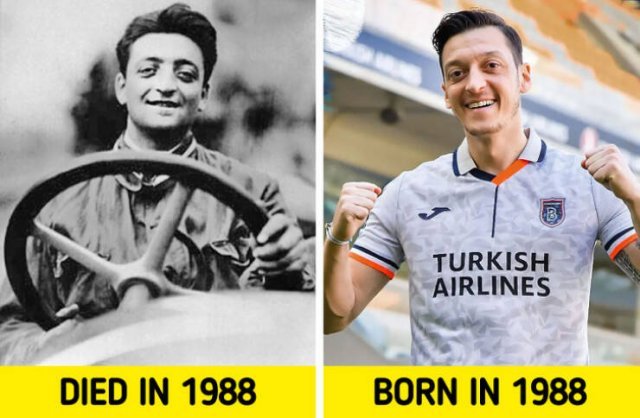
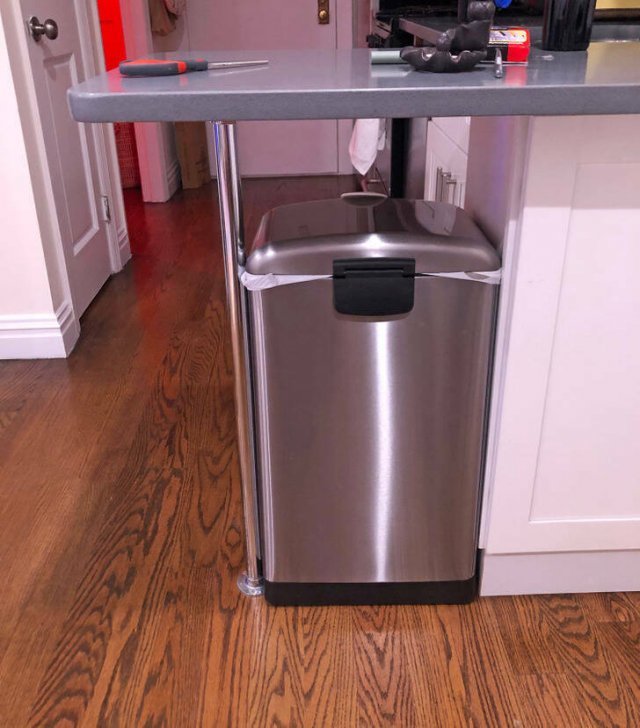
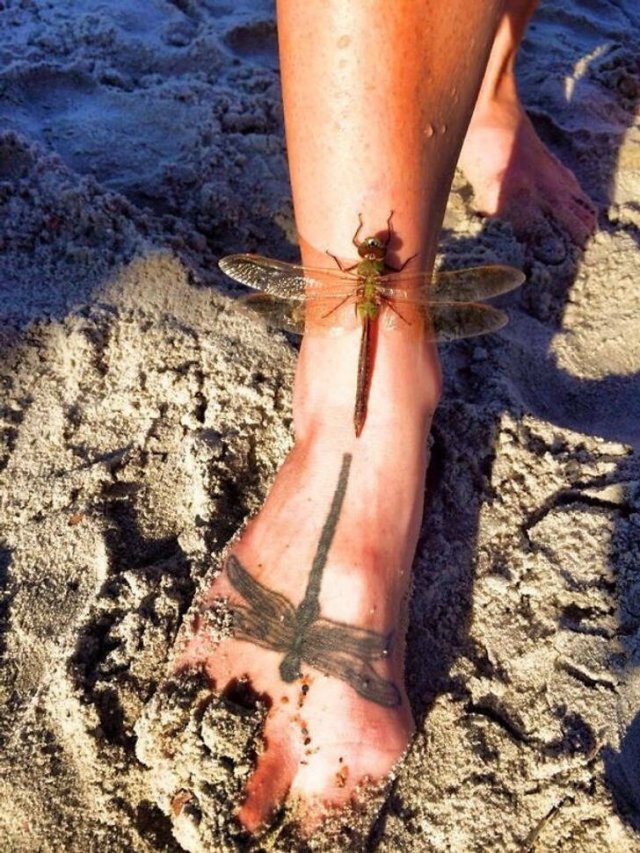
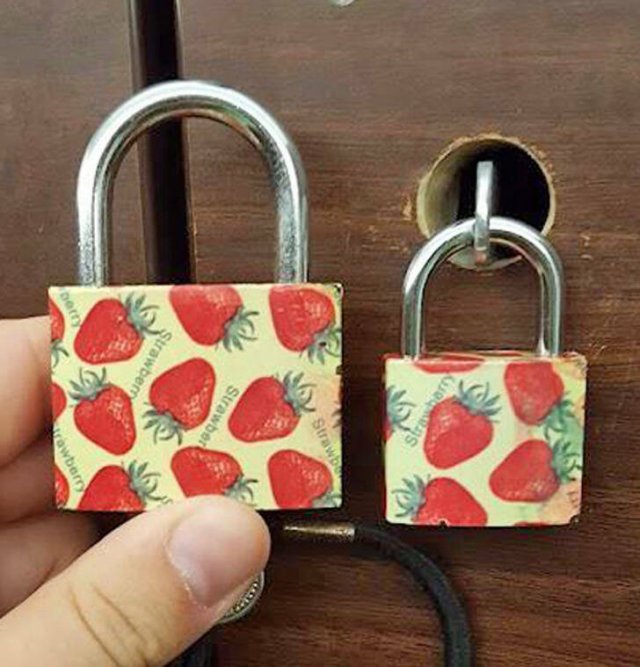
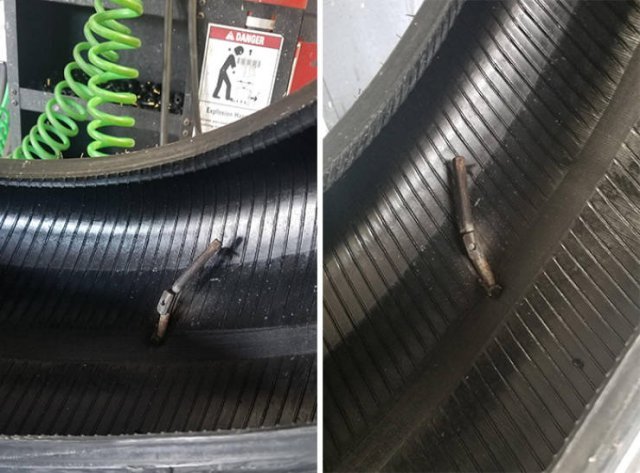
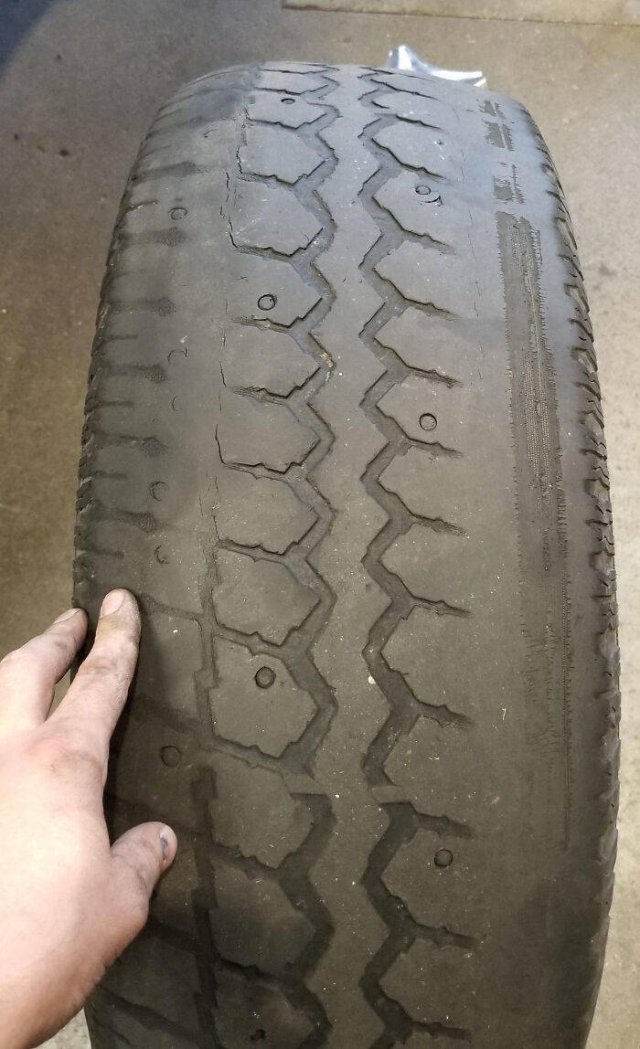

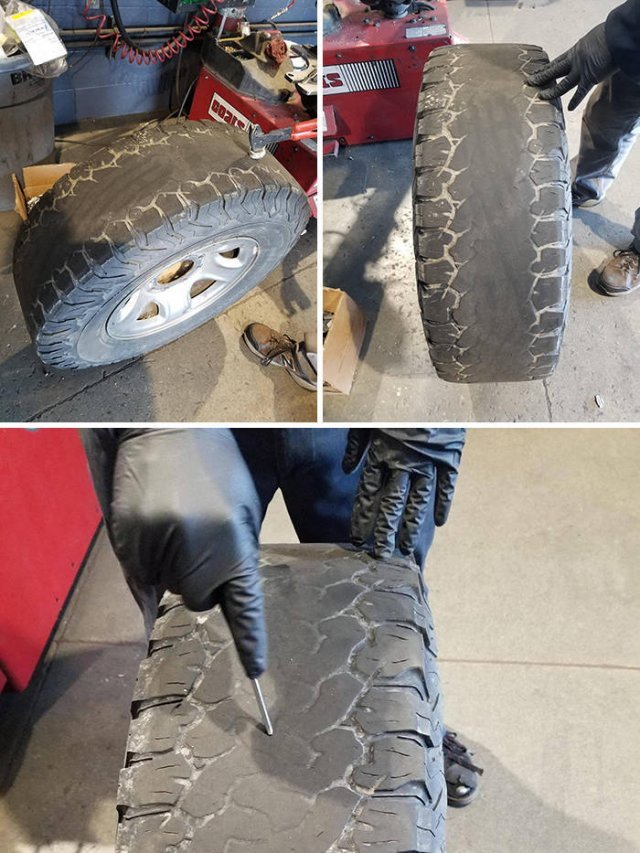
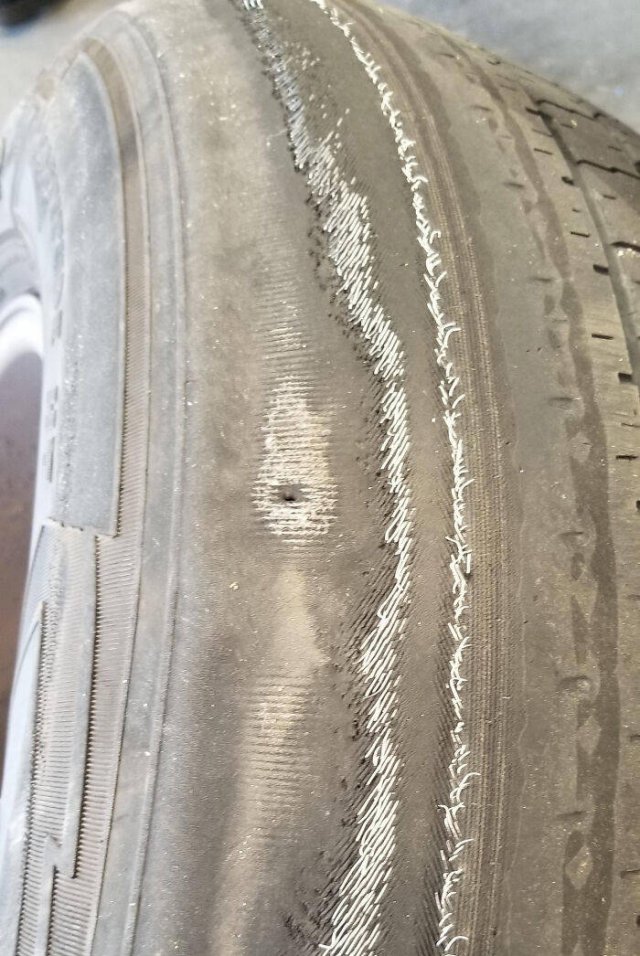
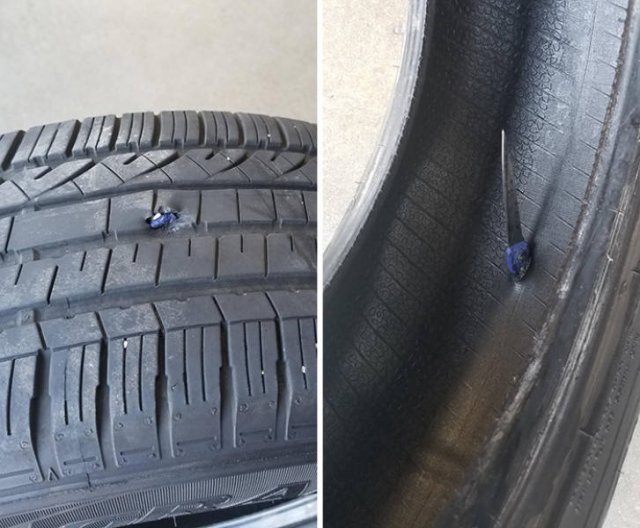
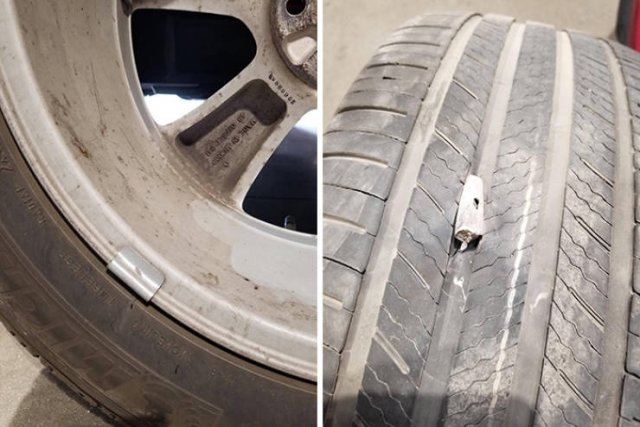
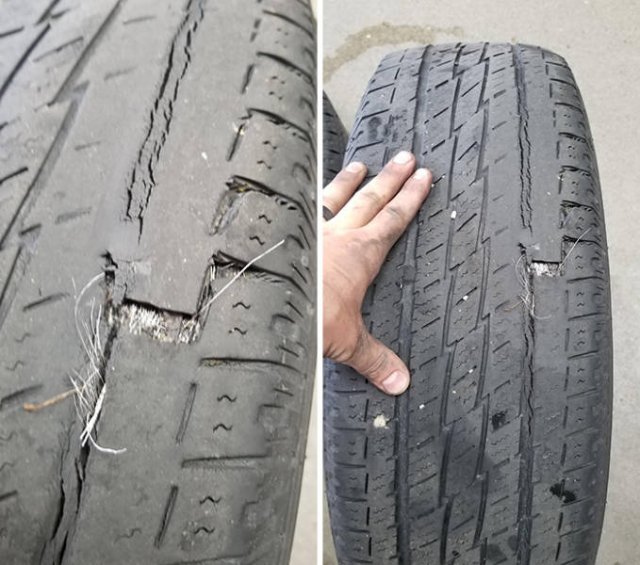







» SUPER TRUCKS...
» APRIL NATIONAL CELEBRATION DAYS APRIL 25 2024
» WIZE TRIVIA QUIZ * How many pull ups did Gary Lloyd do in 24 hours to achieve the Guinness? *
» WISETRIVIA ANSWER PAGE
» IN THE LOCAL NEWS...4
» MOOMS's...9
» WORD DAILY Word of the Day: * aphorism *
» APRIL NATIONAL CELEBRATION DAYS APRIL 24 2024
» YOUTUBE SHORTS OFF THE WALL...21
» YOUTUBE SHORTS WWE...21
» YOU TUBE SHORTS DANCE ONLY...2
» HEY JOE * MUSIC COMPILATION OF WILD SHIT *
» YOU TUBE SHORTS MUSICIANS ONLY...10
» BUSHBARBIE...